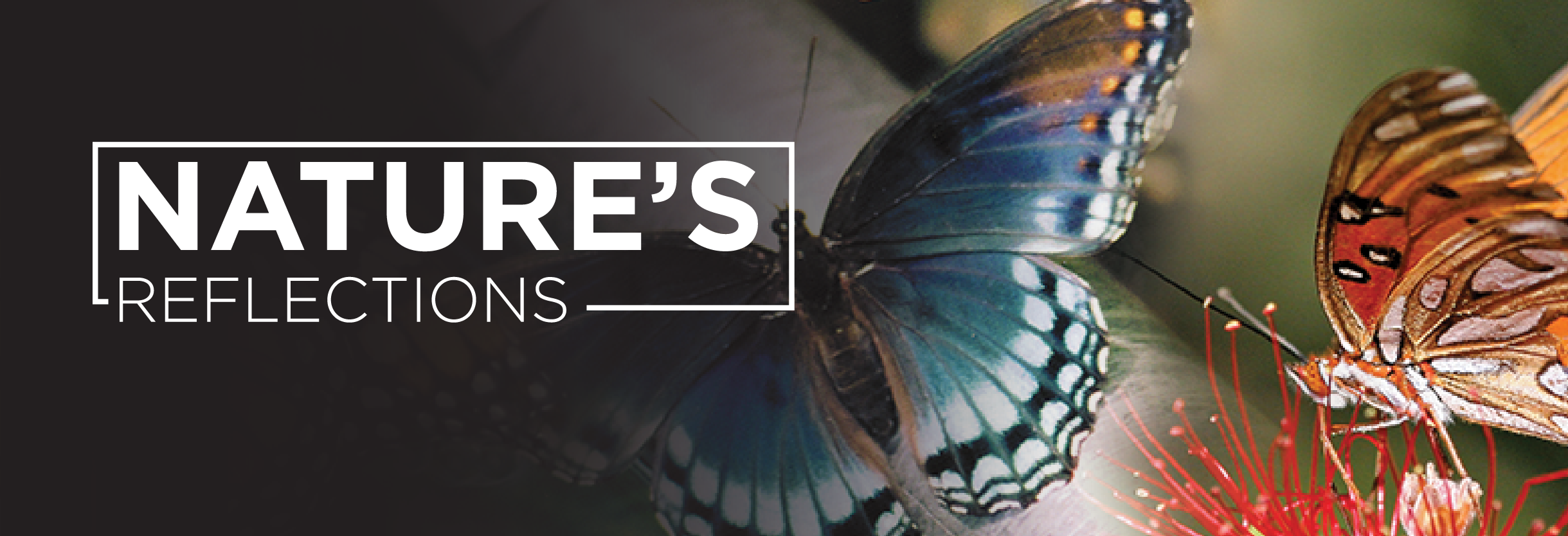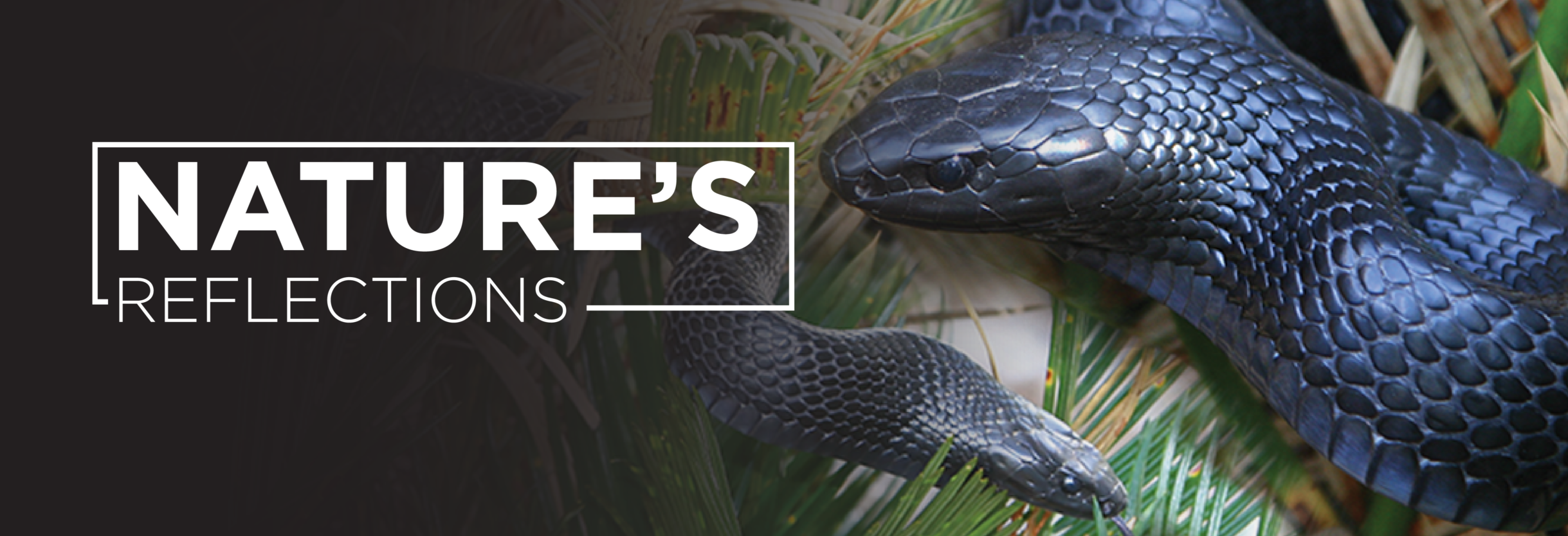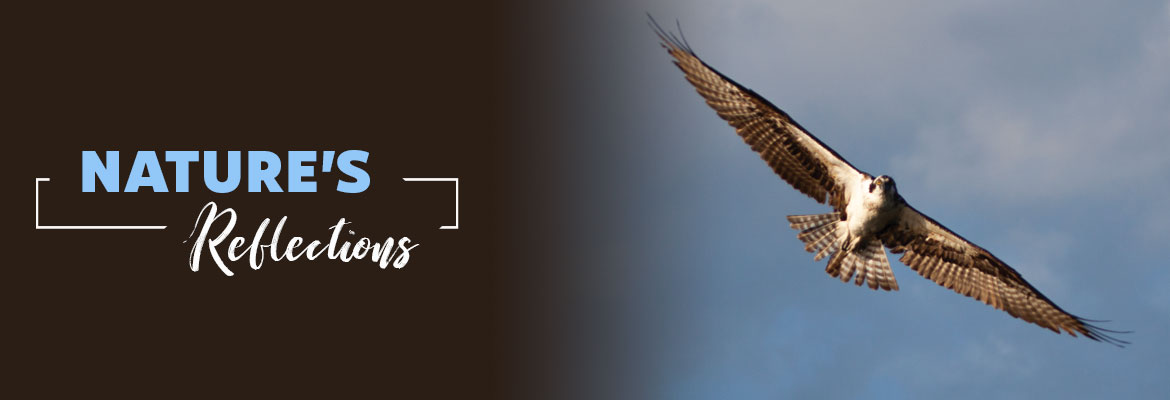Nature’s Reflections – Butterflies
THE GRACEFUL, CROWNING TOUCH TO ANY GARDEN
Some are as big as your hand, while others could fit on the head of a tack. Regardless of size, butterflies are creatures of beauty that are a joy to watch. According to entomologists, there are 200 species of butterflies and moths with breeding populations in Florida. Many others visit or migrate through our State.
The most successful butterfly habitat includes plants which meet the needs of butterflies during all four stages of their life cycle: egg, caterpillar, chrysalis and adult. After mating, female butterflies search for the perfect host plant on which to lay their eggs. Not just any plant will do, and native plants are favorites. Females must find a plant that will provide food for their young who emerge as caterpillars with voracious appetites and survive on leaves of the host plant. Most caterpillars have defenses other than coloration. Some hide in curled leaves or silk webbing, while others emit an odor that is repulsive to an enemy.
A caterpillar’s best defense is quick growth, escaping would-be predators by shedding skin to change into a chrysalis. It quickly attaches to plant stems protected by surrounding vegetation. Inside the chrysalis, the adult butterfly is formed by metamorphosis and emerges to sip the sweet nectar from Florida’s flowers.
Time from egg to adult is five weeks. Adults lead a life of leisure, eating, mating, laying eggs, sleeping, and of course, escaping predators. Enemies of these gorgeous, day-flying insects are primarily human creations – vehicles, pesticides and parking lots. Others fall prey to disease and natural predators. Ants, particularly fire ants, along with other insects, arachnids (spiders) and birds are among the major predators of butterfly eggs and caterpillars.
Adult butterflies are capable of traveling considerable distances. During the fall, monarchs travel from southern Canada to central Mexico. In Florida, the monarch is not the only long-distance traveler. From August to mid-October, huge numbers of cloudless sulphurs, long-tailed skippers, common buckeyes, gulf fritillaries, clouded skippers and others come south with the rest of the snowbirds to spend the winter in Florida.
Column & photos by Sandi Staton – sandi.staton@gmail.com
Read the full Nature’s Reflections article in the October 2018 SECO News online.






